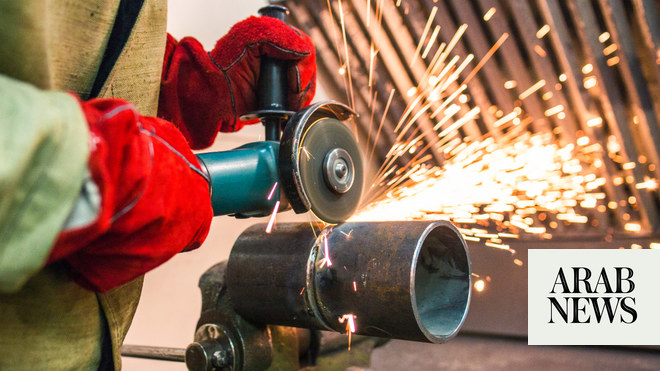
RIYADH: Turkish factory activity expanded steadily in June, although new orders growth slowed and price pressures grew as the currency weakened, a survey has revealed.
The Purchasing Managers’ Index for manufacturing touched 51.5 in June, unchanged from the previous two months and staying above the 50-point line that separates expansion from contraction, the Istanbul Chamber of Industry and S&P Global said.
Output was up for the fourth month running, the survey showed, booking the fastest growth rate since July 2021.
Besides improving demand, firms also attributed the rise to the ongoing recovery from February’s major earthquake and a pickup in activity following the Turkish election.
“Manufacturing production kicked on nicely in June and the goods-producing sector as a whole finished the first half of the year in broadly positive shape as demand improved further,” said Andrew Harker, economics director at S&P Global Market Intelligence.
“Firms were battling the familiar foe of currency weakness, which limited new order growth and brought an abrupt halt to the recent easing of inflationary pressures,” Harker added.
The Turkish lira has fallen 28 percent so far this year, largely after the reelection in late May of President Tayyip Erdogan, who has moved to backtrack on years of unorthodox economic policy. As part of the policy pivot, the central bank has stopped using its reserves to support the lira.
The survey showed input cost inflation for factories accelerated sharply in June and was the most pronounced since July last year, with respondents citing unfavorable exchange rate movements as the main cause.
Moroccan economy gains momentum
The Moroccan economy gradually gained momentum after the severe drought last year, the latest official data from the High Commission for Planning showed.
The North African country registered 3.5 percent growth in its gross domestic product during the first quarter of this year.
It exceeded the government’s revised projection of 3.3 percent growth as agricultural and non-agricultural activities picked up pace.
The country’s drought situation severely hit the agricultural sector last year, resulting in its GDP slipping to 1.3 percent in 2022 after recording 8 percent in 2021.
The government had originally projected this year’s growth to reach 4 percent, but revised it down due to the damage to the agricultural sector and the unprecedented wave of inflation.
However, with the improving dry season, Morocco saw its agricultural sector rise by 6.9 percent in the first quarter of this year, after a decline of 12.2 percent in the corresponding period of last year.
Another key factor that drove the country’s economy is the growth in exports of goods and services which increased by 19.8 percent in the first quarter of 2023, compared to 9.8 percent recorded during the same period last year.
Meanwhile, Morocco’s economy also gained stability due to strong household consumption, which grew at 0.1 percent in the first quarter, compared to 1.3 percent recorded in the corresponding period last year.
(With input from Reuters)












